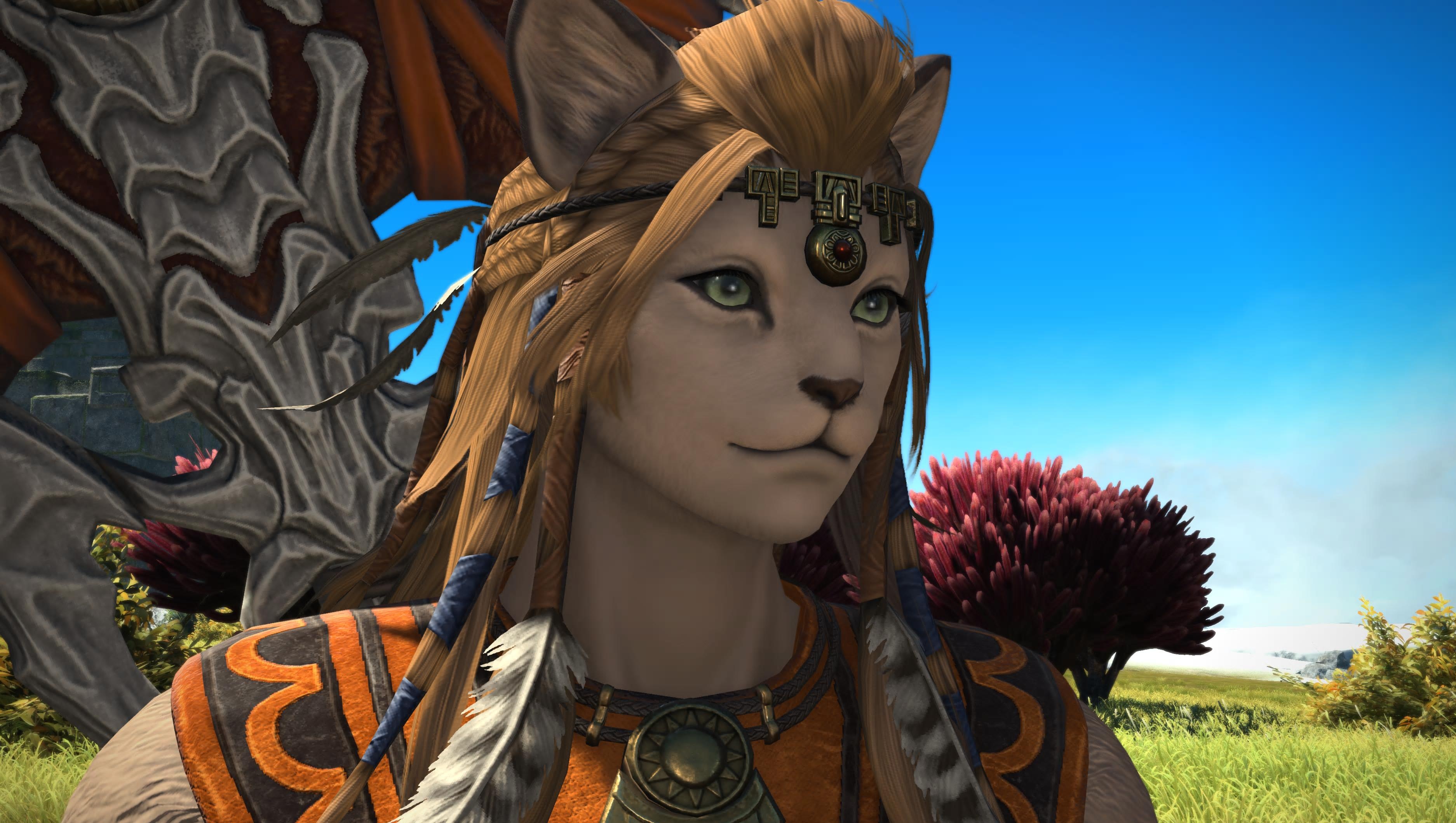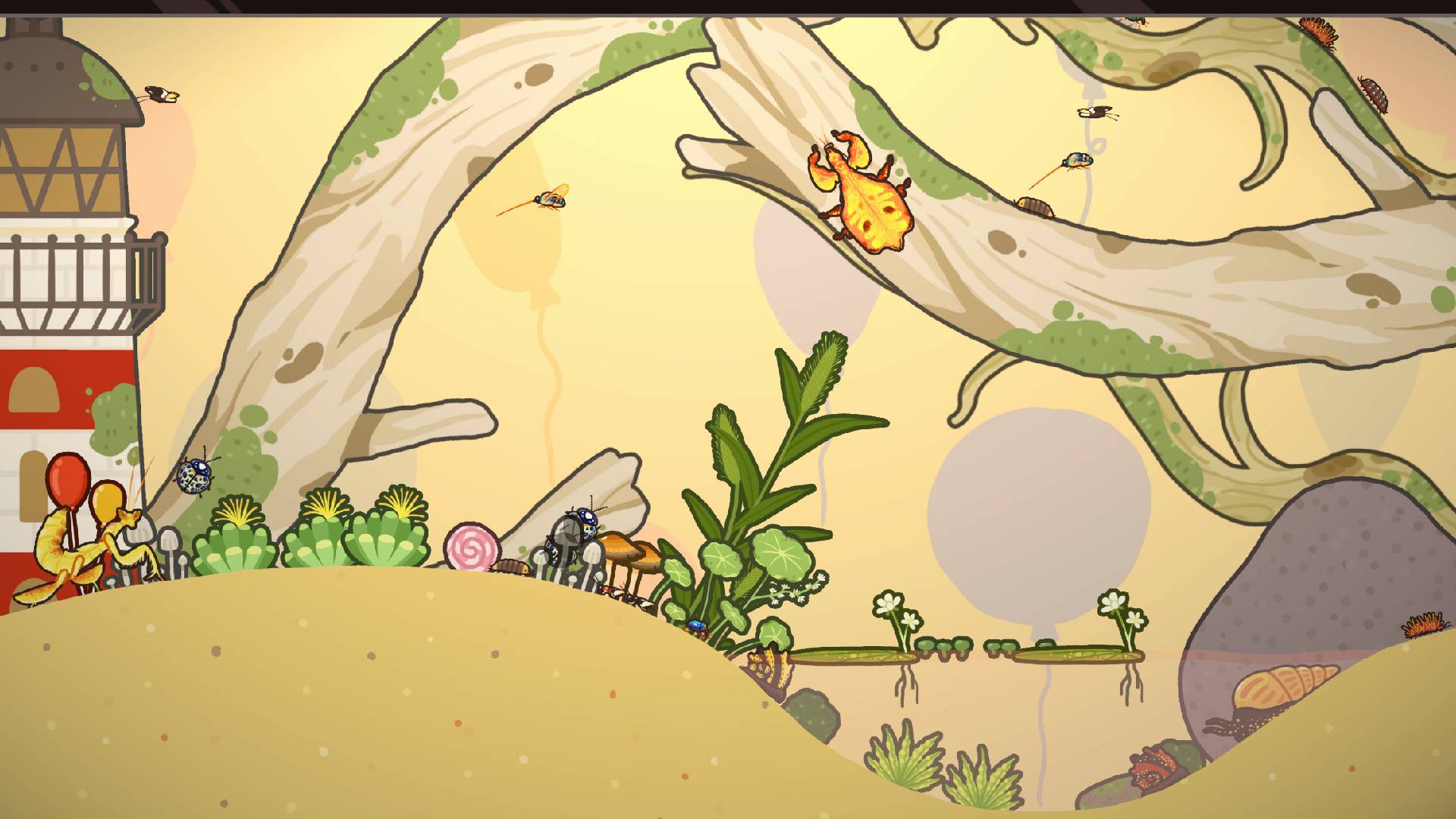
Fresh adventure with unexpected tears.
What is it? The fifth expansion for Square’s MMO, and the first following the end of the Hydaelyn and Zodiark saga.
Release date July 2, 2024
Expect to pay $40/£30
Developer Square Enix
Publisher Square Enix
Reviewed on Intel Core i7-7700, 16GB Ram
Steam Deck Playable
Link Official site
Endwalker was the conclusion of ten years worth of world building and story that culminated in a universe-ending threat. It was a moment for the MMO ages that saw the Warrior of Light pushed to their limits and brought a close to the Hydaelyn and Zodiark saga. Now the next expansion for Final Fantasy 14 is here. Can it live up to fan’s expectations?
No. No it can’t. But frankly, what could have? There’s no following up saving the world and fighting the physical embodiment of universal despair. Instead, Dawntrail bravely walks its own path of fresh beginnings and new adventures. There’s the occasional stumble along the way through the new continents of Tural, but it (mostly) sticks the landing.
(Image credit: Square Enix)
The first thing you’ll notice in Dawntrail, before you’ve even made it onto the boat to Tural. is just how good everything looks. This expansion brings a major graphical update to the game that has vastly improved character looks, materials and lighting. It’s such a big leap forward that I spent my first hour of playtime just marvelling at the tiniest of details, like the fact my character now has slight dark circles around her eyes that adds actual depth to her face. The bottle and cupboards in my house have defined texture to them, and the foliage feels so full now. Everyone has had a real glow up.
After inviting you to join her squad during the last patch of Endwalker, cat in charge Wuk Lamat very much directs the story of Dawntrail. She’s the reason you’re travelling to Tural—you’re only there to help her win the right of succession and claim the Dawnservant’s throne over her siblings. It’s a real family story of living up to expectations and stradling that line between love and rivalry. Wuk Lamat and her brother Koana, an incredibly smart Miqo’te, are both the adopted children of the current Dawnservant—a giant, two-headed lizard-like Mamool Ja called Gulool Ja Ja. He also has a trueborn son, Zoraal Ja, who will stop at nothing to win the contest for the throne. And they are all joined by a fourth contender—Bakool Ja Ja—another sacred two-headed Mamool Ja.
Things start pretty slowly as you explore the forests and wetlands of Kozama’uka, and the mountains of Urqopacha, and learn about the peoples who live there. There’s no real major threat to contend with, just sibling rivalry and the inevitability of comparing yourself to your family. As the Warrior of Light you’re pretty much there in a mentor role to guide Wuk Lamat as she comes up against her own inadequacies and finds her own strengths. She’s a very earnest and relatable character who clearly isn’t ready for leadership until she starts finding her footing. Unlike her rivals who she’s not as smart or strong as, she takes the time to get distracted and learn about all of the cultures and delicacies she comes across.
(Image credit: Square Enix)
She’s endearing as you watch her overcome her own insecurities and grow up in such a short amount of time, but she’s also prone to a few too many speeches about learning about people and working together. It’s sweet the first and second time, but it starts to grate by the fifth—like our hand is being held a little too tightly. Yes, we get it, working together to overcome our differences is great.
The landscape of Shaaloani is great—it’s dusty and full of weirdly-shaped cactuar waiting to attack you—but it’s also full of tropes and unconvincing performances.
Eventually the rite of succession comes to a conclusion and things take a turn for the weird with a surprise Wild West chapter. On the surface, now that things are dealt with, you’re just off on a little jaunt with your old friend Erenville to visit his hometown, but instead find yourself in an odd pocket of cowboys, gunfights and saloons. It’s the one major dip in Dawntrail. The landscape of Shaaloani is great—it’s dusty and full of weirdly-shaped cactuar waiting to attack you—but it’s also full of tropes and unconvincing performances. The tone shift feels so out of place and one Scion appearance felt so bewildering I couldn’t help but laugh at the absurdity of it.
However the slow pace and relative boredom of the events here did have one thing going for it—it made the story’s final section hit like a truck. A real threat finally shows itself—one that can’t be fixed by talking it out and overcoming differences. To say any more would ruin the surprise as the final zones are where things really come together. The last zone in particular is worth going in completely blind, and is genuinely one of the best areas I’ve seen in the entire game. It also sets up some really exciting possibilities for FF14’s future.
(Image credit: Square Enix)
Ultimately the game is about exploring family ties—be that the way siblings compare themselves, trying to connect to one’s parents, or the conflict of still having love for someone who has done something unforgivable. It also explores different approaches to finding birth parents, dealing with grief, and creating your own found families with friends. It may not do it perfectly, but there are many profound, touching moments that will resonate no matter what your family looks like.
Despite the odd story hiccups, exploring Tural is wonderful. Each town you come across feels so distinct with its own history and customs, from the feathery Hanuhanu’s reliance on reeds and ceremony, to the giant Yok Huy’s beliefs of life after death. You explore each in a surprising amount of detail that helps ground this vast fantasy world so that it feels tangible and real. The forests of Yak’Tel are a particular highlight as you navigate the bubbling tensions between those living in the bright, upper forest, and those living in almost complete darkness in the lower half. The descent from sunshine and swaying leaves to gnarled roots and the soft blue glow of luminescent plants is as dramatic as they come.
The whole adventure feels reminiscent of Final Fantasy 10. It’s one long tour as you support Wuk Lamat on her journey, much like Tidus does for Yuna, but without the doomed, secret smooches in the glowy woods. Fans of Final Fantasy 11 also get treated to a feast of Easter eggs and musical touches in the final quarter.
(Image credit: Square Enix)
Unfortunately, Endwalker’s abominable stealth sections make a return (one comes right after another, ugh), but thankfully with a facelift that makes them easier to follow. There are also a few missed opportunities—a lot of the story quests are just going somewhere to talk to someone who then sends you straight back. There are a few excellent solo duties, but they feel few and far between. Some new quest types would go a long way to break things up. Luckily, the fighting is the best it’s ever been.
Some new quest types would go a long way to break things up. Luckily, the fighting is the best it’s ever been.
As a healer the new dungeons have had me sweating. Each boss has had new mechanics that really mix things up by layering them in unexpected ways. Now on top of having to dodge telegraphed attacks you’ll also find yourself weaving around obstacles and needing to watch arena edges and projectile paths closely. Despite so many new mechanics to play with, it’s still immediately readable—you just need to work harder to not get hit. In particular the two post game dungeons layer imaginative designs with cheeky references and mechanics that make your adrenaline surge. They’ve set a new bar for exciting combat.
The two new jobs, Pictomancer and Viper, fit into the roster well with Viper carving its own super speedy niche and Pictomancer making for a great alternative to Black Mage. Viper is easy to get to grips with at a surface level so you’ll safely be making dents in enemies from the outset, but takes more skill to master. Pictomancer, on the other hand, seems complicated at first as you build up for larger attacks, but soon clicks into place. While most of the other jobs make the leap to the new levelcap seamlessly, Black Mage players are struggling with the greater emphasis on movement during dungeons when trying to perform some spells.
(Image credit: Square Enix)
Elsewhere crafters and gatherers have plenty to tuck into with all the new materials and recipes. There are no major changes to how things work, but there didn’t need to be. The deliveries quests are great for rounding out the culture of Tulliyolal and are worth it for more lore tidbits.
Like the family ties the game explores, Dawntrail feels messy. But while there are disappointments and low points, it’s also full of heart. It’s at its best in the small moments of joy and discovery you share with those around you. Wuk Lamat’s journey might not be to everyone’s tastes, but the game’s world and combat come together to make up for the dips in the story to round things out into one hell of a package.






